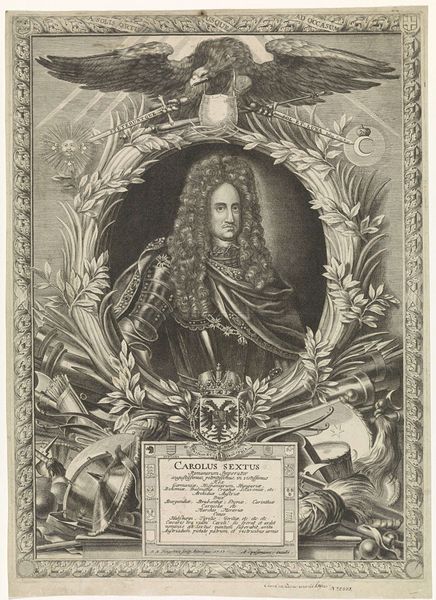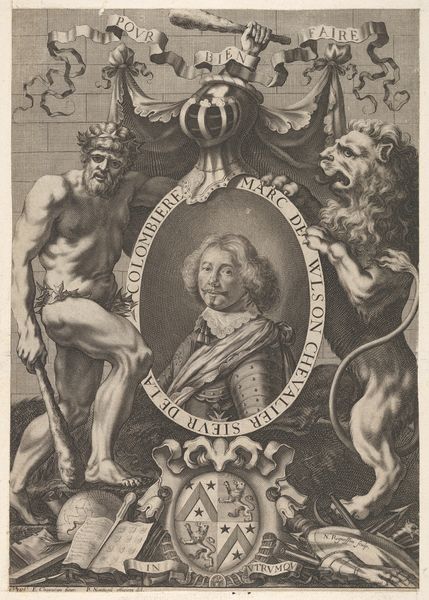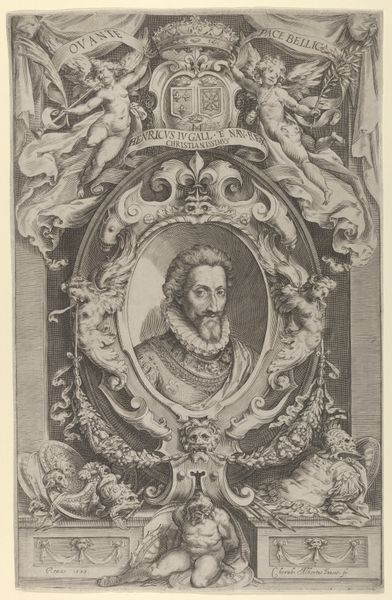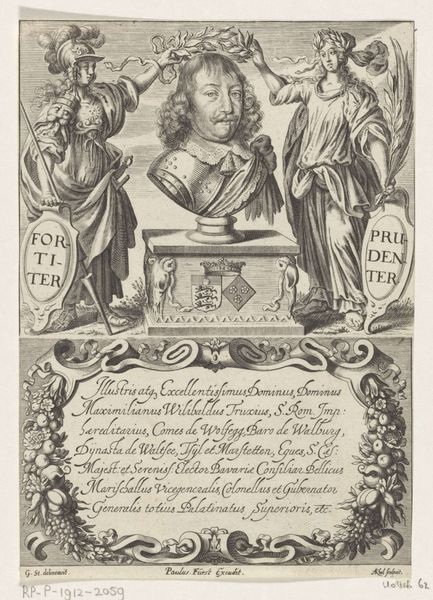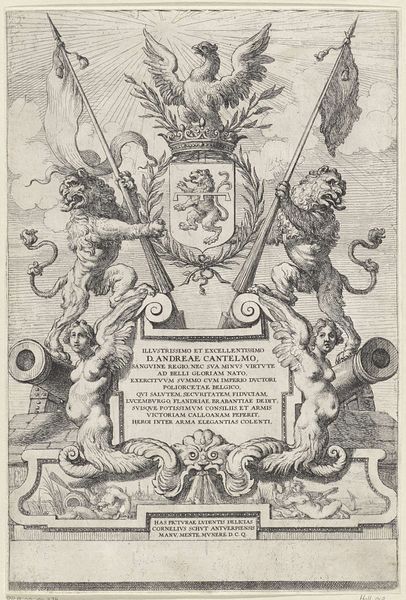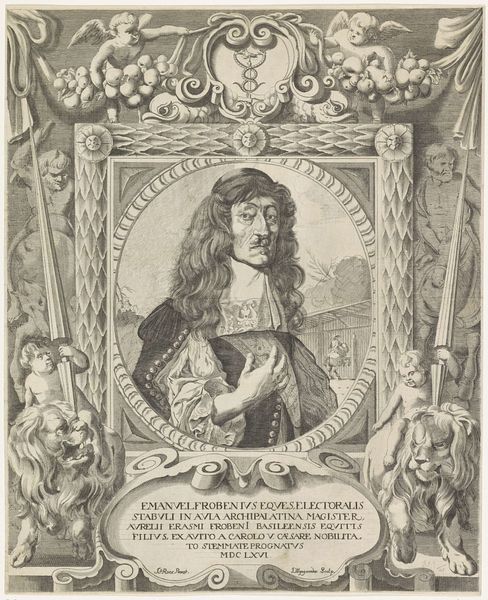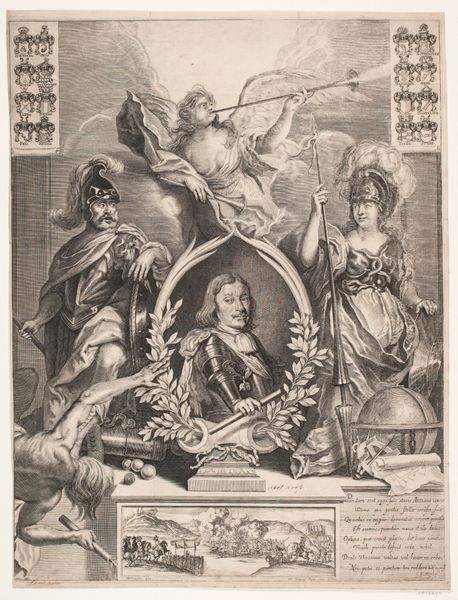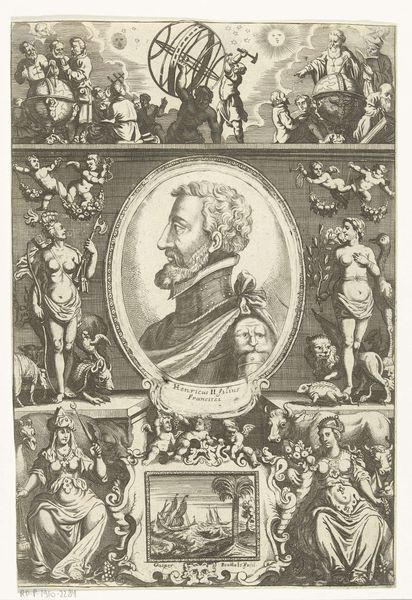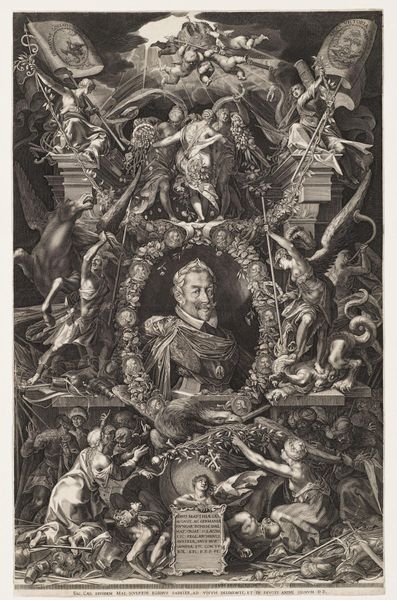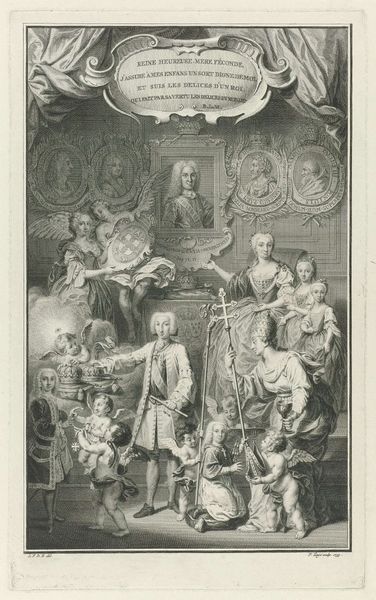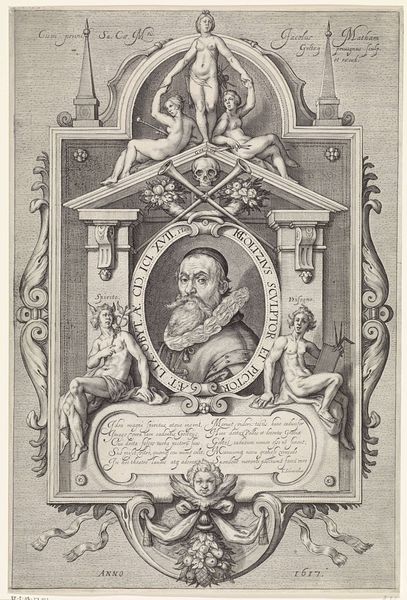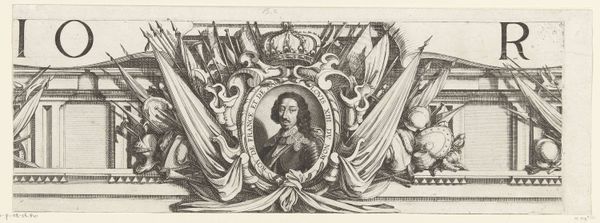
Portret van Leopold Willem, aartshertog van Oostenrijk 1630 - 1677
0:00
0:00
adriaenlommelin
Rijksmuseum
print, engraving
#
portrait
#
allegory
#
baroque
# print
#
old engraving style
#
form
#
line
#
history-painting
#
engraving
Dimensions: height 360 mm, width 249 mm
Copyright: Rijks Museum: Open Domain
Editor: This is a striking print! It's a portrait of Leopold Wilhelm, Archduke of Austria, made sometime between 1630 and 1677 by Adriaen Lommelin. The amount of detail is incredible. What’s your reading of the symbols around the portrait? Curator: Ah, yes, a fascinating compendium of symbolic language. Notice the figures flanking the central portrait—warrior and peacemaker? The contrast echoes through the animal pairings below: the ferocious lion versus the docile lamb. These pairings set up an allegorical framework, reflecting how rulers of the time presented themselves: powerful yet benevolent. Editor: Right, so it's a carefully constructed image meant to convey a very specific message. But what about that lamb with the flag up top? Curator: The Agnus Dei. In Christian iconography, the Lamb of God, symbolizing Christ's sacrifice and redemptive power. Note how the radiant light seems to emanate from it, suggesting divine blessing and legitimizing Leopold Wilhelm's authority. These are symbols deliberately placed, contributing to a powerful narrative of power sanctified by divine will. What effect do you think this visual language has on viewers from the time? Editor: I can see how impactful it would be! These weren't just pretty pictures but actively constructed narratives, influencing people’s perceptions of power. I see it now, a carefully crafted tool of influence. Curator: Exactly! The portrait isn’t merely a likeness, but an active statement of identity and authority meant to resonate with deep-seated cultural values and beliefs. This work certainly leaves a mark in cultural memory, continuing to ignite discussion.
Comments
No comments
Be the first to comment and join the conversation on the ultimate creative platform.

